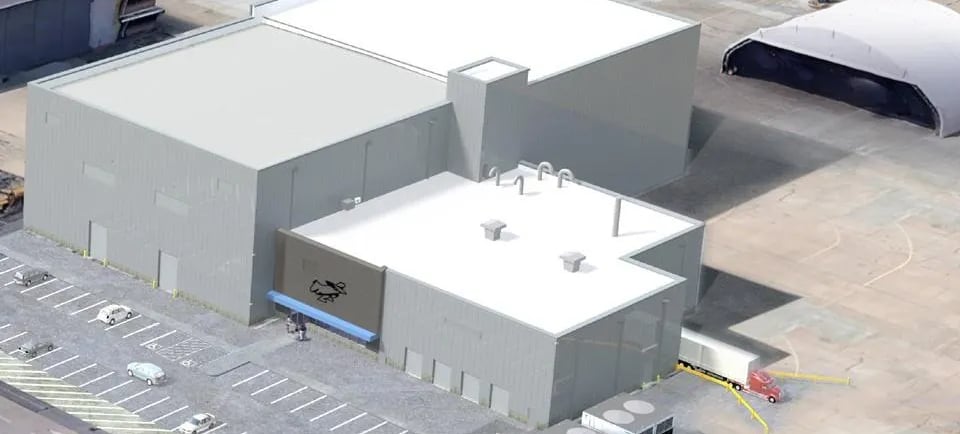Boeing's Strategic Moves - The Forward Move
Boeing has been in a state of flux from a strategy and tactical perspective and has made two key strategy moves as of-late. Let's look at the forward move amid Boeing's ongoing wriggles and tug-of-war with the Regulators and Authorities.


Last week, we discussed about Boeing's simultaneous backward and forward moves and delved into Boeing's acquisition of Spirit Aerosystems. This time around, let's look at Boeing's forward move.
Boeing, as part of the forward move geared towards the future, is investing towards and setting up new, additional facilities around its existing BDS facilities located in St. Louis, Missouri and Mesa, Arizona with the same aimed at supporting upcoming defense programs, primarily, the MQ-25 Sting Ray unmanned aerial refueling tanker for the U.S. Navy besides the T-7A Red Hawk for the USAF and the MQ-28 Ghost Bat UAS for the USAF's CCA program.
Additionally, Boeing has its eyes clearly set on the USAF's upcoming, 6th generation Next Generation Air Dominance (NGAD) program along with the U.S. Navy's F/A-XX program which are both going to be crucial for driving the next phase of growth for Boeing in the combat aircraft business. This is especially important as Boeing's existing F-15E Eagle and the F-18E/F Super Hornet fighter jet platforms are ageing and are almost in the last leg of their production life cycle with the Super Hornet facility scheduled to wind-down by 2027. Boeing, however, has reinvented the F-15E with its modern avatar, the F-15EX Eagle II, featuring a fully digital backbone and a comprehensive electronic warfare suite for the 21st century digital age threats.
With an eye at the future, Boeing is investing multi-billion dollars in capital expenditure towards expanding, upgrading and modernizing its industrial base within the U.S. As part of the same, Boeing is setting up 1. A new, 47,500 sq. ft. Advanced Coating Center (ACC) at a site near its existing facilities in St. Louis, Missouri which will be utilized for housing and storing the next generation combat aircraft post assembly. The facility will become operational from 2025. 2. Similarly, Boeing is setting up a modern, 300,000 sq.ft. assembly facility for its MQ-25 Sting Ray UAS program at a site located at St. Louis Airport in Mascoutah, Illinois. 3. Boeing has, recently, also set up an advanced composite fabrication center in Mesa, Arizona, and a lab and test facility in St. Louis, as part of the same overarching plan for BDS.
These latest facilities are going to be operated by Boeing's Phantom Works division under its Production System of the Future effort which intends to be able to develop the capabilities to create a modular, flexible and easily scalable digital production system of the future which will be platform agnostic and will be used for combat aircraft of the future (read NGAD). NGAD is crucial to Boeing's future in military fighter jets business as Lockheed already has its iron grip on the F-35 program for decades to come while Northrop's forte clearly has traditionally been stealth aircraft, especially bombers, and the award of B-21 Raider program to Northrop by the DoD was, thus, more or less obvious.
Boeing's key wins in the military aircraft business so far have been the USAF's KC-46A Pegasus and the T-7A Red Hawk Programs based on low ball bidding as Boeing planned to play tight on initial deliveries on defense programs and make up on that later on the sustainment support and MRO part while effectively leveraging its commercial aviation business which had been generating huge profits for over a decade. However, 737 MAX crisis and the ensuing pandemic decimated commercial aviation and ruined those plans for Boeing and instead put the company in a pressure cooker situation with the embattled company operating in the existential crisis mode since then. The latest setback for Boeing has been the charges of criminal conspiracy and fraud brought by the Federal Government against Boeing over the certification of 737 MAX and the subsequent fatal crashes. Boeing has agreed to plead guilty in the case and will be coughing up penal charges of around another $243.6 million, in addition to the $243 million it has already paid, and will be required to invest another around $500 million towards improving its internal safety and quality processes for future.
Boeing, thus, is strategically in a tight spot, wherein, it is required to make all-out efforts to get itself out of the mess it has created for itself while being in the crosshairs of the regulators and simultaneously required to pave the runway for future growth requiring huge investments, which is almost going to be nothing short of a Herculean effort for Boeing's leadership over the medium term...
Image: An Illustration of Boeing's Advanced Coating Center (ACC) in St. Louis.
Image Credits: Boeing


